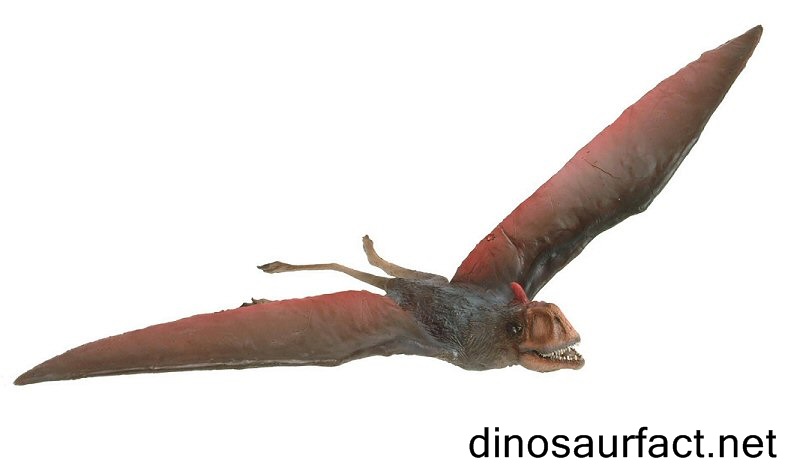 Click to visit the previous Pterosaurs bio
Click to visit the previous Pterosaurs bio
 |
|
 |
|
Kingdom: Animalia
Phylum: Chordata
Order: Pterosauria
Family: Anurognathidae
Genus: Anurognathus
 |
|
 |
|
 |
|

The term ‘Anurognathus' is pronounced as ann-your-og-nath-us and this term was derived from the Greek. The meaning of the term is frog jaw. These creatures are known to have lived in the wooded plains of the Western Europe about 150 million years ago. Its size would have been one-quarter of an ounce and three inches long and insects were their food. They would have been very small creatures with about 20 inch wingspan and stubby tail.
Anurognathus is known to have belonged to the pterosaur family and it would have been in the size of a hummingbird. This creature differed from other pterosaur its family by its short jaws and stubby tail. It would have got delicate and thin wings and these wings would have been stretched from the fourth finger of its front talons located at the back of its ankles and these creatures would have been in attractive colors.
Since these creatures were small and they fly freely, they would have become quick prey for a number of bigger beasts and so researchers assume that it would have nested on the back of larger sauropods. This hiding would have provided them a safe place to protect themselves from beasts and they would have lived by eating the bugs that constantly revolve around bigger sauropods.
Researchers were able to find only one skeleton of Anurognathus in the country of Germany at the Solnhofen limestone of Bavaria. It was first described and named in the year 1923 by Ludwig Doderlein.
From the skeleton, researchers have found that it would have got a very small body of about 9cm as compared to longer wings. It would have got a head of about 2cm with full of sharp tooth. It was the smallest pterosaur and would have the primate pterosaur as well. It would have weighed around three grams to seven grams. The later of its kind would have evolved with thinner and longer heads as compared to the earlier ones.
According to researchers it would have eaten insects like damselflies and lacewings and they would have found it difficult to eat dragon flies since Anurognathus were very small. Anurognathus was traditionally attributed to the group of long-tailed pterosaur called Rhamphorhynchoidea. But, it had a comparatively shorter tail as compared to other Rhamphorhynchoidea enabling it to skillfully hunt the insects. It was found that its shorter tail was like pygo style of modern birds. It is classified under Rhamphorhynchoidea group because of its neck, metacarpals and elongated fifth toe.
Later in the year 2007, the second specimen of Anurognathus was found by S. Christopher Bennet. This second specimen was better articulated and much more complete in nature as compared to the first specimen. In this specimen, researchers were able to find the muscles of the arm and thigh under ultra-violet light. From the second specimen researchers were able to find more information about Anurognathus. The skull was shown to have been very broad and short in the second specimen. Anurognathus was classified under the sauropsida class and pterosauria order.
Index
Extinct Profiles
 Triassic Dinosaurs
Triassic Dinosaurs Jurassic Dinosaurs
Jurassic Dinosaurs Cretaceous Dinosaurs
Cretaceous Dinosaurs Pterosaurs
Pterosaurs Marine Reptiles
Marine Reptiles Dinosaur Extinction
Dinosaur Extinction